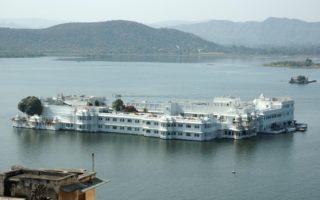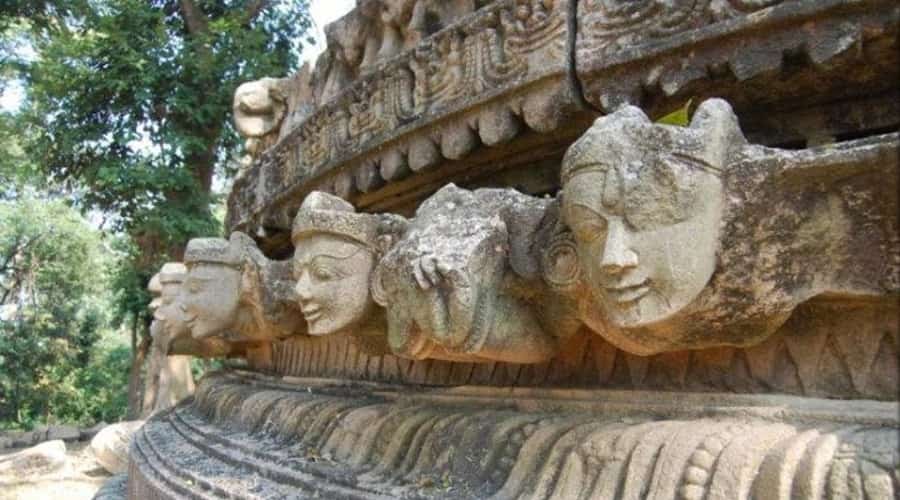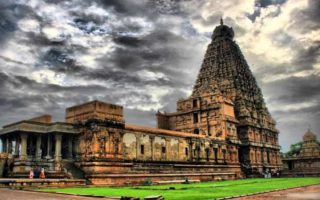Jyotirlinga is a supreme devotional object that is representative of Lord Shiva. Jyotirlinga literally means (radiance i.e. Jyoti) and Linga (i.e. the sign of Shiva). In India, there are 12 Jyotirlingas Tour and 5 of them are in Maharashtra. It is said that the supreme manifestation of Shiva is the Jyotirlinga that is a part less boundless reality. During a battle of supremacy between the Gods, Shiva manifested himself as a fiery column of light that dazzled the eye. The places where this line of light appeared are now revered and worshipped as Jyotirlingas… each Jyotirlinga site has a different story and specific history around it and each Linga is a different kind of Manifestation of Shiva.
The primary worshipped idol is the linga that represents the stambha without a beginning or an end i.e. the boundless power and nature of Shiva for Hindus and Shaivanites, a visit to the Jyotirlinga is supposed to ring boundless spiritual benefits. Jyotirlinga is considered to be one of the main worship sites for Lord Shiva devotees. It is believed in Hinduism that the burning flame of the power to make Jyotirlinga worship simple. However, 12 Jyotirlingas are considered to be very auspicious and respected among them.
These Jyotirlingas are stationed in eight states like Gujarat, Maharashtra, Tamil-Nadu, Andhra-Pradesh, Madhya-Pradesh, Jharkhand, Uttarakhand and Uttar Pradesh. According to Hindu mythology, visiting Jyotirlinga is a pilgrimage that removes all sins and makes the soul pure and pure. The devotees who come to these Jyotirlingas become pure, pure and calm. They become enlightened and enlightened with the highest and divine knowledge. According to Hindu folklore, one who visits these holy sites receives all the accomplishments and powers.
The Legend of 12 Jyotirlingas
The legends surrounding the creation of these Jyotirlingas are both enchanting and mystical. According to Hindu mythology, the tale begins with a cosmic argument between Lord Brahma, the creator, and Lord Vishnu, the preserver, over their supremacy. In an attempt to quell their dispute, Lord Shiva, the destroyer, emerged as an infinite pillar of light, the Jyotirlinga, putting an end to their discord. This led to the establishment of the 12 Jyotirlingas, each symbolizing the victory of divine truth and unity.
The Importance of Jyotirlingas
The 12 Jyotirlingas are not just places of worship; they are sources of immense spiritual energy and enlightenment. Pilgrims who visit these sacred shrines believe that they can attain spiritual liberation and absolution from their sins. The divine presence of Lord Shiva is felt profoundly at these sites, making them a significant part of Hindu spirituality.
Somnath – The First Jyotirlinga
- Location: Prabhas Patan, Gujarat
- Significance: One of the holiest and most ancient temples dedicated to Lord Shiva. Destroyed and rebuilt multiple times, it symbolizes the eternal nature of the divine.
- How to Reach: The nearest railway station is Veraval, and the nearest airport is Diu Airport.
- Best Time to Visit: October to March.
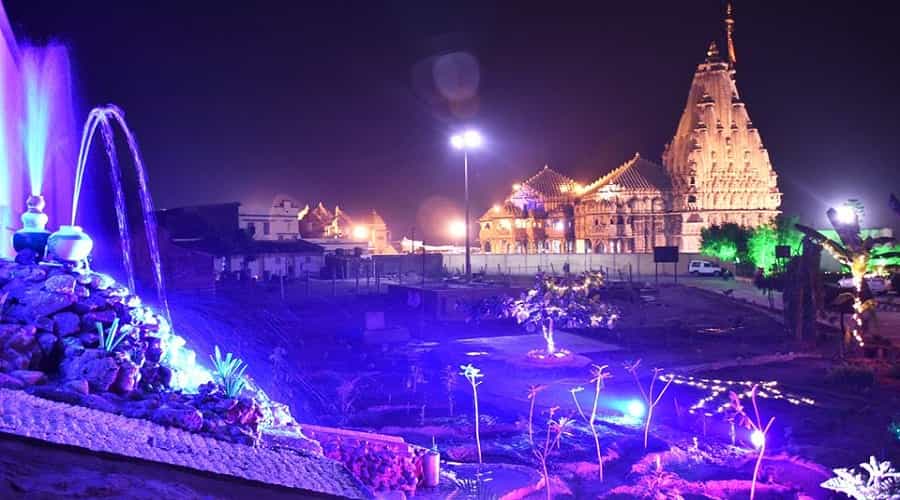
Known to be India’s first Jyotirlinga….staunch Shaivanites (worshippers of Lord Shiva) believe that Somnath is the world’s oldest Jyotirlinga. The Somnath Jyotirlinga is situated in Saurashtra in Gujarat. Legends say that when the moon was cursed for his excessive vanity by Daksh Prajapati, the moon god performed strict penance for many years at Somnath to gain deliverance from the curse. It is said that the holy Shivalinga at Somnath was established by the moon God. Incidentally, the temple has been destroyed and then rebuilt many times in the past.
The current temple is built according to the Chalukya style of Hindu architecture and was visioned by Vallabhai Patel. Somnath is a Triveni Sanga or the meeting point of 3 rivers; Kapila, Hiran and Saraswati and that give it a special spiritual significance. Lord Somnath temple is a Lord Shiva temple in proximity to the Veraval town in Gujarat’s westernmost shore. According to Puranas tales, the shrine of Somnath emerged in a very interesting way. The temple belongs to Someshwara who is none but Lord Shiva.
The lingam of Lord Shiva enshrined in the shore temple of Somnath is embellished with the moon on the forehead. As per myths, the moon god ‘Som’ was under a curse given to him by Daksha. As a result, he lost his luster. In order to get rid of the curse, he prayed to Lord Shiva who was pleased with him and thus, agreed to free Som from the curse. Thus, he got back his lost luster and later, out of gratitude, built a temple in honor of Lord Shiva who later came to be known as ‘Somnath’ here.
- Also Read: Shiva Temples in Gujarat
Mallikarjuna – The Second Jyotirlinga
- Location: Srisailam, Andhra Pradesh
- Significance: Situated on the banks of the Krishna River, it is a revered pilgrimage site known for its stunning architecture and natural beauty.
- How to Reach: The nearest railway station is Markapur Road, and the nearest airport is Hyderabad Airport.
- Best Time to Visit: October to March.
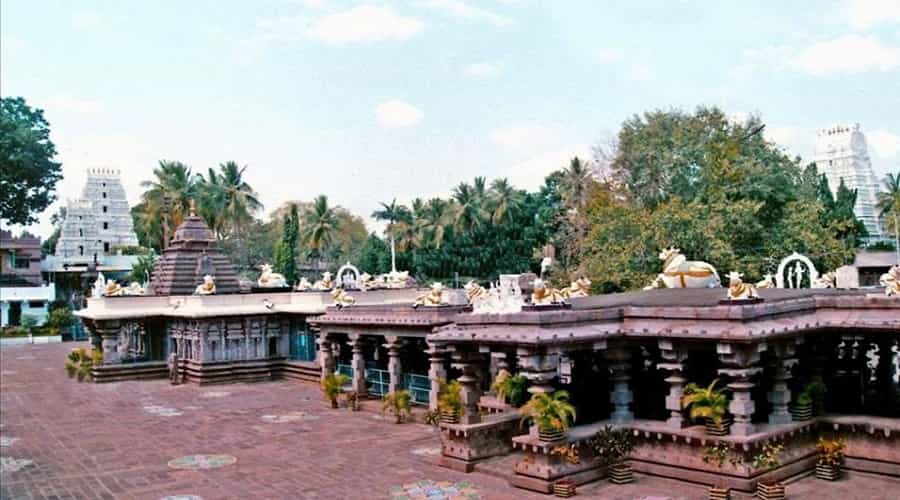
This is a very famous Jyotirlinga that is housed in the Sri Bramarambha Mallikarjuna Temple at Srisailam in Andhra Pradesh. This temple is dedicated to Shiva and Parvati and is very important to the Hindu sub-sects of Shaivism and Shaktism. Besides being a Jyotirlinga the Mallikarjuna temple is also a Shakti Peetha and hence is an important spiritual destination. The legends say that this is the place where Shiva and Parvati stayed to find suitable brides for their sons Kartik and Ganesha. The Linga here is worshipped by Jasmine flowers (they are locally known as Mallika) and this is why the name Mallikarjuna came into existence.
Every year the Mahashivratri is celebrated here with great pomp and show. It is said that mere glimpse of this Jyotirlinga is enough to cleanse the soul of all traces of impurity. The Jyotirlinga in the temple is on the Srisailam Hill on the banks of Krishna River and one who comes here and prays to Shiva will gain spiritual benefits equivalent to Ashwamedha Yagya. The temple of Mallikarjuna is a lord Shiva temple situated along River Krishna’s southern banks in the holy town of Srisailam in the state of Andhra Pradesh.
According to historical records, this temple came into being in the 6th century under the initiative of King Harihara Raya; the king of Vijayanagar. The temple graces the hilltop of Nallamala hills in Andhra Pradesh’s Kurnool district. As per myths, Sage Bringi was cursed by Goddess Parvati who told him to stand forever as he was a Shiva devotee and did not worship her. Lord Shiva, however, came to his rescue by providing him his third leg so that the standing could become easier for him.
Mahakaleshwar – The Third Jyotirlinga
- Location: Ujjain, Madhya Pradesh
- Significance: Home to the unique Dakshinamurti form of Lord Shiva, it is famous for the Bhasma Aarti, where ash is applied to the idol.
- How to Reach: The nearest railway station is Ujjain Junction, and the nearest airport is Devi Ahilyabai Holkar Airport in Indore.
- Best Time to Visit: October to March.
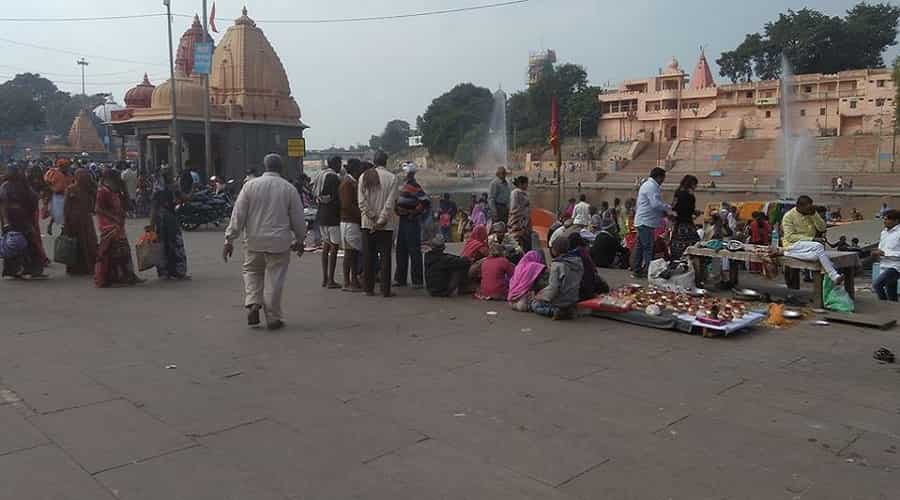
The Mahakaleshwar Jyotirlinga is in the capital of Madhya Pradesh i.e. Ujjain Nagar. The specialty of this Jyotirlinga is that it faces south unlike the other Jyotirlingas in India. Every morning the Bhasmati is performed here and this ritual has a lot of spiritual significance. It is said that performing puja at Mahakaleshwar is responsible for prolonging the lifespan and removing impediments and threats to life. Citizens of Ujjain believe that Mahakaleshwar is their ruler and protector and t is he who has ensured the wellbeing of the city.
The temple is situated on the banks of Rudra Sagar Lake and the Lingam is known as Swayambhu or one who gets power from within and requires no mantra Shakti. The Mahakaleshwar Idol is known as Dakshinamurti i.e. it faces the south that is an indicator of Tantric Shivnetra. The Mahakaleshwar temple is dedicated to Lord Shiva and is one of the Jyotirlingas situated in the holy city of Ujjain in Madhya Pradesh. The temple lies along the lake banks of Rudra Sagar.
The temple reflects a highly ornate Rajput architectural style and finds a mention in the Puranas. The Mahakaleshwar Shiva linga is Swayambhu lingam or self-manifested lingam and is referred to as Dakshinamurti because the lord here is south-facing. The ritual of smearing the lingam of Mahakaleshwar with ash from cremation ground is a quite unique ritual that catapulted the temple to the peak of fame.
Omkareshwar – The Fourth Jyotirlinga
- Location: Mandhata Island, Madhya Pradesh
- Significance: Shaped like the Om symbol, it is one of the most picturesque Jyotirlingas, situated on an island in the Narmada River.
- How to Reach: The nearest railway station is Omkareshwar Road, and the nearest airport is Indore Airport.
- Best Time to Visit: October to March.
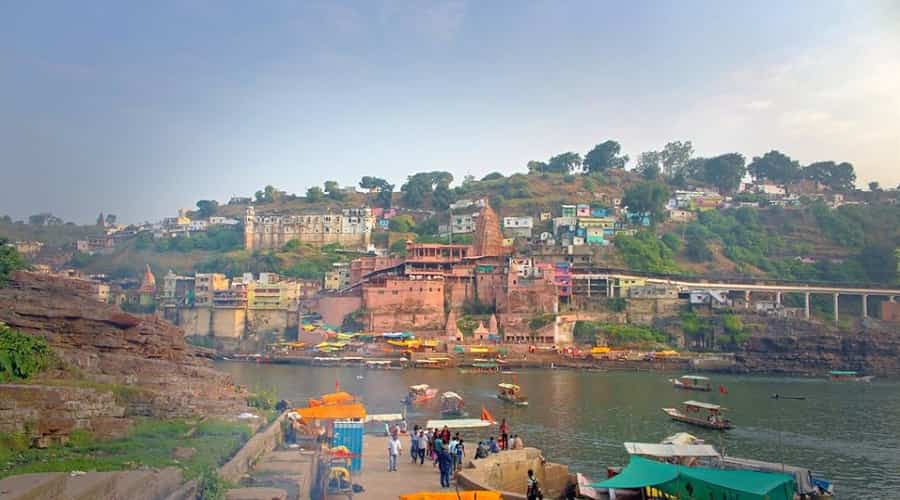
Situated at Indore the Omkareshwar Jyotirlinga is in close proximity to the Narmada Nadi. The river actually snakes around the hillock o which the Omkareshwar temple is perched and it takes on the shape of a giant “Om”. It is said that the word Om is the source of all creation and it was first uttered by Lord Brahma. Any religious text recitation is incomplete without the recitation of the holy Om.
It is said that Brahma and Vishnu had a battle regarding who was supreme and Shiva cursed Brahma because the latter had used unfair means to win the battle. From that day Brahma was not a part of religious ceremonies. Apart from the Lingam, the temple contains the five faced Ganesha and the Parvati idols. Just below the temple is a holy cave is Adi Shankara where he met his spiritual Guru Govindapada. The temple of Omkareshwar falls in the state of Madhya Pradesh and is nearly 77 kms from the bustling city of Indore.
The temple stands on a holy ‘Om’ shaped island upon the Narmada River. River Narmada cuts through the island dividing it into two parts. The island that has the temple on it is referred to as Shivpuri or Mandhata. The temple enshrines a Swayambhu Jyotirlinga of Lord Shiva and is well known for its split Jyotirlinga; i.e. Omkareshwar and Mammaleshwar. A pilgrim has to visit both the temples in order to complete his or her Omkareshwar pilgrimage successfully.
Kedarnath – The Fifth Jyotirlinga
- Location: Prabhas Patan, Gujarat
- Significance: One of the holiest and most ancient temples dedicated to Lord Shiva. Destroyed and rebuilt multiple times, it symbolizes the eternal nature of the divine.
- How to Reach: The nearest railway station is Rishikesh, and the nearest airport is Jolly Grant Airport in Dehradun.
- Best Time to Visit: May to October (temple remains closed during the winter).
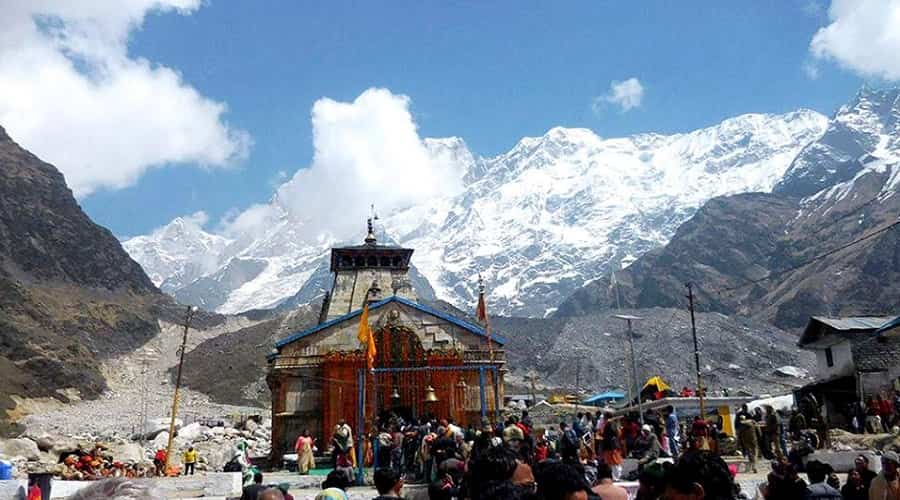
Kedarnath Jyotirlinga is one of the 12 prominent Jyotirlingas in India. Kedarnath is also a part of the Chota Char Dhams and Hindus believe that a Kedarnath darshan will cleanse all past life sins. The reference to the sanctity of Kedarnath is given in Skanda Purana and Shiva Purana. Kedarnath is at an astounding height and it’s not easy to reach the majestic white temple that stands at a height of 3584 meters above sea level.
Legends say that Shiva was so enraged at the sins committed by Pandavas during the war that he disguised himself and then re-appeared in the form of different body parts of Nandi the Bull. The hump of the bull appeared at Kedarnath. A triangle-shaped holy rock is worshipped in the form of Lingam and it is bathed with ghee and incense and the leaves of Bel tree is offered to the deity. This temple is only open from Aprils to November.
Kedarnath Jyotirlinga is one of the highest Jyotirlingas of Lord Shiva perched at an elevation of nearly 3580m above the sea level in Uttarakhand’s Rudraprayag district. The temple here is said to have existed during the epic era of the Mahabharata. Adi Guru Shankaracharya is said to have constructed this temple around 8th century AD. The Shiva lingam enshrined here is conical in shape and quite resembles bull’s hump. This tells about the myth that Lord Shiva who tried to evade the Pandavas appeared at this spot in the form of a bull’s hump.
Bhimashankar – The Sixth Jyotirlinga
- Location: Pune, Maharashtra
- Significance: Known for its historical and architectural significance, it is believed to be the place where Lord Shiva defeated the demon Bhima.
- How to Reach: The nearest railway station is Pune, and the nearest airport is Pune Airport.
- Best Time to Visit: July to February.
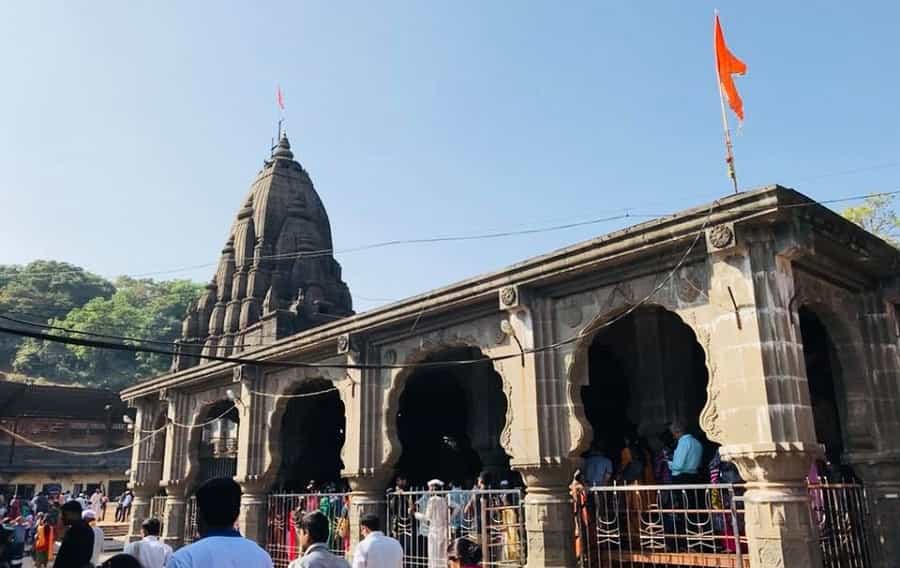
Bhimashankar Jyotirlinga – 12 Jyotirlingas TourThe Jyotirlinga of Bhimashankar is situated on a hill named Sahyadri in the district of Pune. The locals revere the place as Moteshwar Mahadeva. It is said that the devotees who view this temple after sunrise gain deliverance from all past sins and they are assured of a place in heaven. Bhimashankar is also the origin of the river Bhima and this river flows ahead to merge with the river Krishna near Raichur.
It is said that Lord Shiva reduced a demon named Bhima to ashes at this spot and ended a bitter war between the demons and Gods. It was then that Shiva manifested his holy self into the Jyotirlinga of Bhimashankar. The graceful temple represents the ancient Nagara architectural style and was built in the 18th century by Nana Phadnavis. Bhimashankar temple has been referred in 13th-century texts as a place of great religious and historical significance.
The temple of Bhimashankar is in the state of Maharashtra and falls within the village of Bhorgiri bordering the Sahyadri ranges. The popular and bustling city of Pune is just 100kms away from the Bhimashankar shrine that lies atop a hill and amid dense forests. River Bhima too has originated from this place. The temple architecture shows a fusion of ancient and modern styles and is said to have been constructed around the 18th century. As per legends, Lord Shiva had killed demon Tripurasura at this place and sweat oozing out from his skin pores gave birth to the River Bheemanathi.
Kashi Vishwanath – The Seventh Jyotirlinga
- Location: Varanasi, Uttar Pradesh
- Significance: One of the most revered temples in the world, it is believed to be the center of the universe and a significant pilgrimage site for Hindus.
- How to Reach: The nearest railway station is Varanasi Junction, and the nearest airport is Lal Bahadur Shastri Airport.
- Best Time to Visit: October to March.
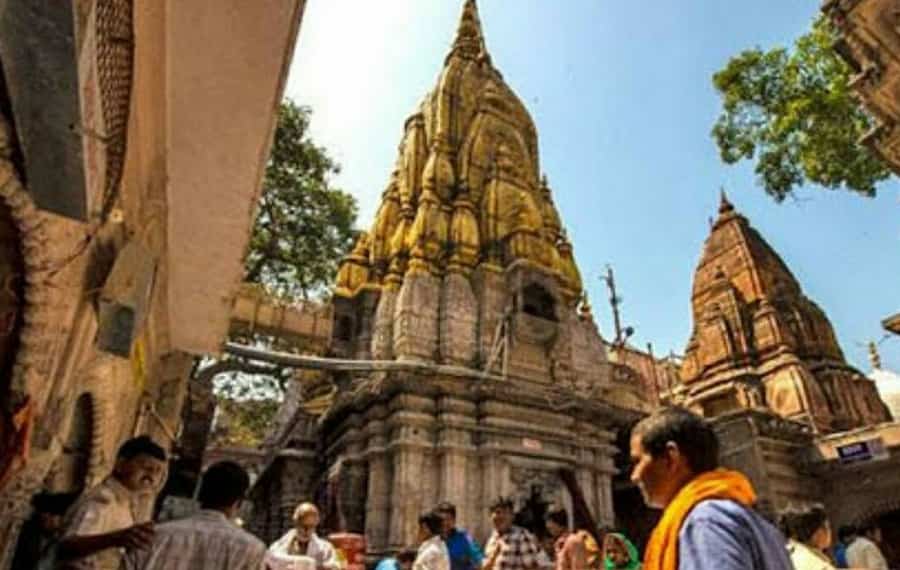
The Vishwanath Jyotirlinga is in the holy town of Kashi which is referred to as the mother of all pilgrimage spots. Legends and scriptures say that even when doomsday strikes and the whole of earth s destroyed the pilgrimage of Kashi will remain unharmed. It is said that the great Lord Shiva will stabilize the town of Kashi with his great Trishul and then retain all its glory and beauty till the end of devastation and doomsday. The temple complex is beautiful with a range of small shrines and a glorious lingam.
The 60 cm long lingam is 90 cm in circumference is nestled in a silver altar. About 3000 visitors on an average visit the temple every day. The temple is known for its three domes that are made of pure gold. Incidentally, the temple is near the Manikarnika Ghat that is a Shakti Pith so this spot is also very significant for followers of Shaktism. On the banks of River Ganga is another auspicious Jyotirlinga of Lord Shiva; the Kashi Vishwanath temple in the holy town of Varanasi in Uttar Pradesh.
The presiding deity of the temple is Lord Vishwanath or Lord Visheshwara meaning ‘ruler of the universe’. The Shikhara of Kashi Vishwanath temple is plated with gold and the very darshan of the temple is believed to offer one with the much-needed moksha or salvation. The Lord Shiva lingam at the Kashi Vishwanath temple is nearly 60cm in height and has a circumference of 90cm. The main shrine comes as a quadrangle and comes with an ornate altar crafted out of silver.
Trimbakeshwar – The Eighth Jyotirlinga
- Location: Trimbak, Maharashtra
- Significance: Known for its unique lingam with three faces representing Lord Brahma, Lord Vishnu, and Lord Shiva. The source of the Godavari River is also nearby.
- How to Reach: The nearest railway station is Nashik Road, and the nearest airport is Ozar Airport in Nashik.
- Best Time to Visit: September to February.
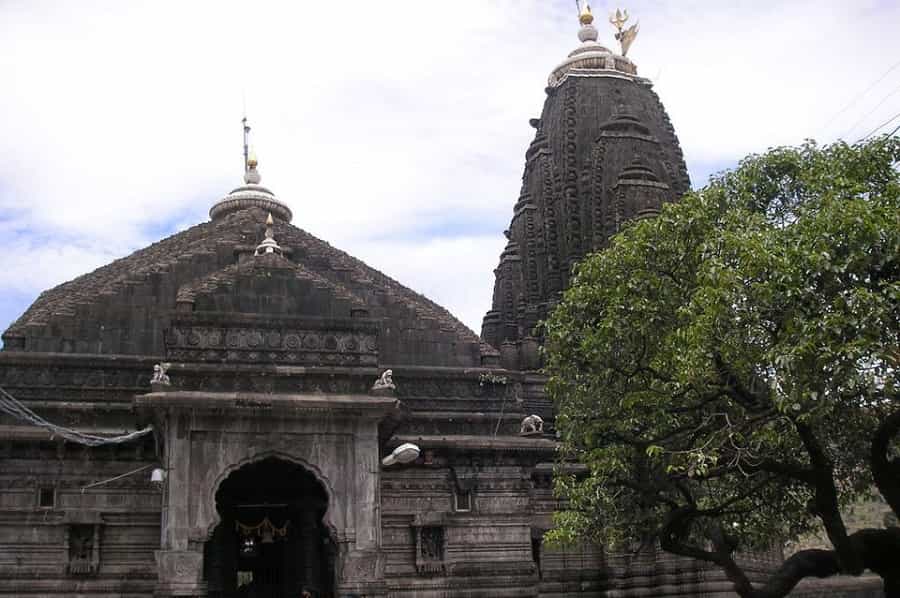
This Jyotirlinga is in Nasik in Maharashtra and is near the famous Brahmagiri Mountain. Incidentally, Brahmagiri is the source of the holy river Godavari. The temple premises contain a Kunda that’s known to be the source of Godavari. This temple was built by the famous warrior and iconic figure Peshwa Bajirao. Scriptures say that one of the names of Shia is Travenkeshwar and he was lured here by the pleas of the river Godavari and the holy Saint Gautam.
The special feature of this temple is that it’s situated between 3 hills i.e. Brahmagiri, Katagiri, and Nilagiri. There are 3 lingams inside the temple denoting Brahma and Vishnu apart from Shiva. The temple tank is known as Amritavarshini. The three lingas have begun to erode due to extra water flow and it’s said that this denotes erosion of social values. A gorgeous jeweled crown (has emeralds, pearls, and diamonds) covers the Lingas and it is here since the time of Pandavas.
Treva Shankar or Trimbakeshwar Jyotirlinga is one of the most important lingams of Lord Shiva. This temple lies in the foothills of Brahmagiri hills and in the holy Triambak city. The lord of the temple is called Trimbakeshwar and is believed to offer one with the gifts of longevity and immortality. The temple dates back to the 18th century and had been set up by Peshwa Nana Sahib; the Maratha king. The Lord Shiva Jyotirlinga at the Trimbakeshwar shrine is embedded with a jewel-studded gold crown that as per myths has been offered by the Pandavas in the era of epic Mahabharata.
Baidyanath – The Ninth Jyotirlinga
- Location: Deoghar, Jharkhand
- Significance: Also called Vaidyanath Dham, it is believed to have healing powers and is associated with the legend of Ravana.
- How to Reach: The nearest railway station is Baidyanath Dham, and the nearest airport is Deoghar Airport.
- Best Time to Visit: October to March.
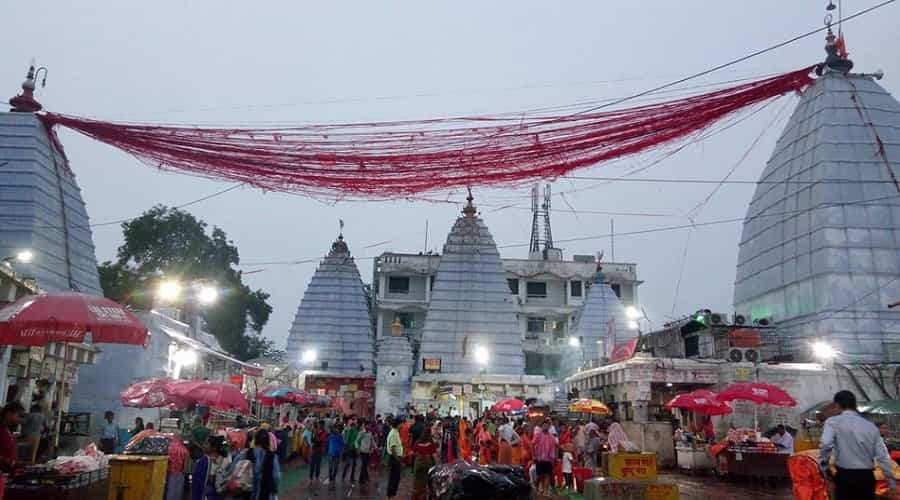
Shri Baidyanath Shivalinga is placed ninth among all the Jyotirlingas. The place where Lord Shri Baidyanath Jyotirlinga temple is located is also called the Baba Baidyanath Dham. This holy place is situated Deoghar district in the Santhal Parganas Division of Jharkhand state. It is a huge temple possessing the main temple where the Shiva Jyotirlinga is placed, as Lord Shiva is given the supreme place and along with that 21 other temples of different Gods and Goddesses are also present. The Jyotirlinga Shrine refers to the place where Shiva appeared as a fiery part of the light. The temple of Lord Shiva is 72 feet tall, faces the east and is lotus shaped.
The devotees show their tribute towards Lord Shiva by taking up holy water from Sultanganj and then start their walk from Bhakt Baba Dham towards Baidyanath Dham. Mahashivratri and Shravani Mela are the important festivals when there is the huge crowd of devotees from all around India and the world. Baidyanath Dham is another important Lord Shiva Jyotirlinga situated in Jharkhand’s Santhal Parganas and in the picturesque city of Deoghar.
The temple features a magnificent complex and has an ambiance that is too holy and serene. At Baidyanath Dham lord Shiva is looked upon as the lord of Baidya or doctor. The lingam is believed to heal diseases if you pray sincerely before the idol. The mythological tales reveal that it was the celestial architect lord Vishwakarma who had set up this temple. The main festival associated with the temple is Shravan Mela held around the temple around months July-August.
Nageshwar – The Tenth Jyotirlinga
- Location: Dwarka, Gujarat
- Significance: Known for its swayambhu (self-manifested) lingam and its connection to the city of Dwarka, an ancient Hindu pilgrimage site.
- How to Reach: The nearest railway station is Dwarka, and the nearest airport is Jamnagar Airport.
- Best Time to Visit: October to March.
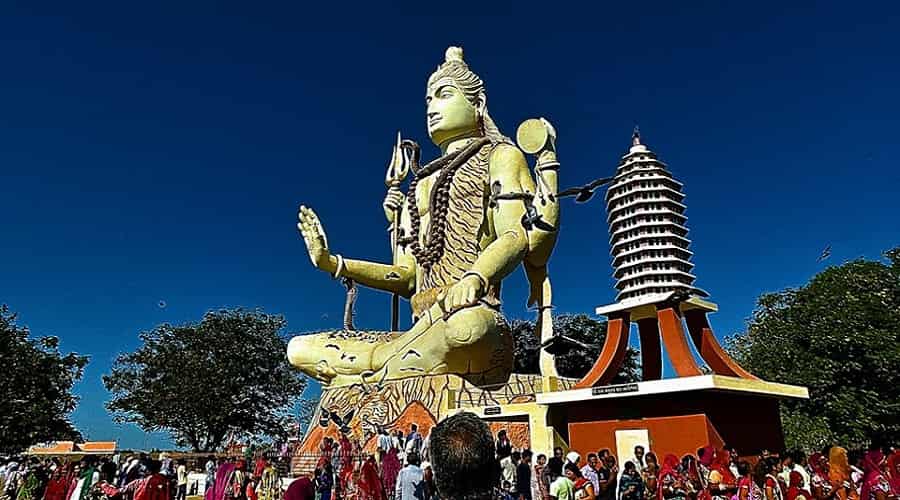
This Jyotirlinga is situated on the outskirts of Gujarat at a place named Dwarka. In Sanskrit texts and literature Lord Shiva is the God of snakes and the full meaning of Nageshwar relates to Lord of snakes. Nageshwar is also the other name for Lord Shiva. The distance between Dwarka Puri and Nageshvara Jyotirlinga is about 17 miles. It is one of the major Jyotirlinga shrines among the 12 auspicious shrines mentioned in Shiva Puranas.
Legends say that to test the supremacy of Lord Brahma and Lord Vishnu, Lord Shiva created an immeasurable pillar of light, the Jyotirlinga. The significance of this Jyotirlinga says that those devotees who come to visit here with full dedication and belief, their all wishes are fulfilled. The Huge crowd of devotees comes here every year during Mahashivratri festival from all over India and the world to show their devotion towards Lord Shiva.
Nageshwar Jyotirlinga stands on the route lying amid the holy Dwarka town and another important pilgrimage site; the Bet Dwarka. The temple is also differently referred to as ‘Nagnath’ temple. This is one among the 12 lord Shiva Jyotirlingas and is a quite auspicious pilgrimage destination for the Lord Shiva devotees. The temple houses a sanctum sanatorium under the ground and that enshrines a Swayambhu Shiva lingam. Outside the temple, there’s a beautiful garden decked with a gigantic statue of Lord Shiva rising to about 25m in height and appearing in a seated posture. The temple here stands for ‘good over evil’ on this earth.
Rameshwaram Jyotirlinga – The Eleventh Jyotirlinga
- Location: Rameswaram, Tamil Nadu
- Significance: Associated with the Ramayana, it is believed to be the place where Lord Rama prayed to Lord Shiva before building a bridge to Lanka.
- How to Reach: The nearest railway station is Rameswaram, and the nearest airport is Madurai Airport.
- Best Time to Visit: October to April.
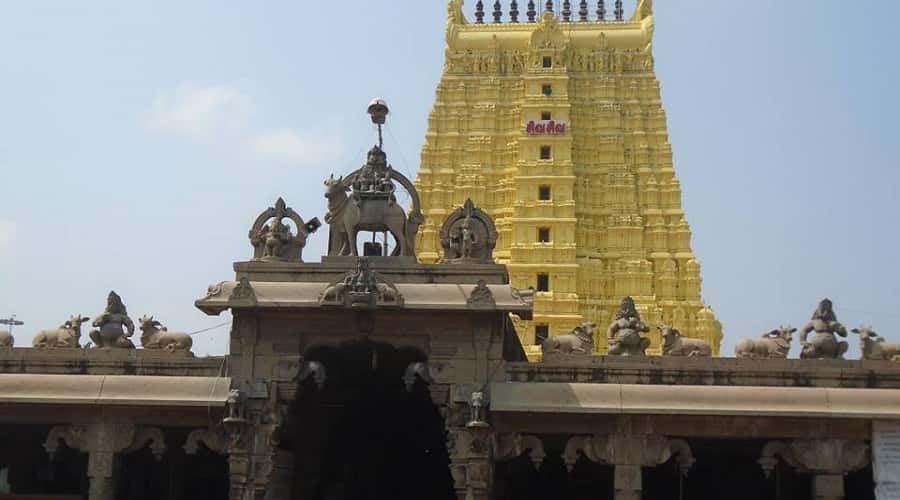
This Jyotirlinga and temple are situated in Rameshwaram Island also known as ‘Pamban Island’ located at ‘Gulf of Mannar’ between peninsular India and Sri Lanka in Ramanathapuram district of Tamil Nadu state. Apart from being an important part of Lord Shiva’s 12 Jyotirlingas, this holy place is also part of the Char Dham in India. Rameshwaram is very well connected to cities like Chennai, Coimbatore, and Madurai etc. There is a belief regarding this Jyotirlinga that it was established by Lord Shri Rama himself. This Jyotirlinga was established by Lord Rama, so is given the name ‘Rameshwaram’.
The other name for Lord Shiva here is ‘Ramanathaswamy’ that’s how the temple is named as ‘Ramanathaswamy Temple’. This Hindu temple is dedicated to Lord Shiva and has the longest corridor among all the Hindu temples in India. The temple design and infrastructure is based on Dravidian Architecture. Rameshwaram is another important pilgrimage destination in Tamil Nadu’s Ramanathapuram district. Rameshwaram is famed for the Ramanathaswamy temple of Lord Shiva.
Ramanathaswamy is another auspicious lord Shiva Jyotirlinga located on the Pamban Island. As per mythology lord, Rama had set up a bridge across the sea to Lanka at Rameshwaram. The temple of Ramanathaswamy is known for its highly sculpted walls and lengthy corridor. As per tales of mythology Lord Rama struck by the sins of Brahman hatya after killing Ravana prayed to Lord Shiva to free him from the sins. When his wish was granted he set up a lingam in honor of Lord Shiva and prayed to him therein.
Grishneshwar – The Twelfth Jyotirlinga
- Location: Ellora, Maharashtra
- Significance: Famous for its exquisite rock-cut architecture, it represents Lord Shiva’s healing form and is located near the renowned Ellora Caves.
- How to Reach: The nearest railway station is Aurangabad, and the nearest airport is Aurangabad Airport.
- Best Time to Visit: October to March.
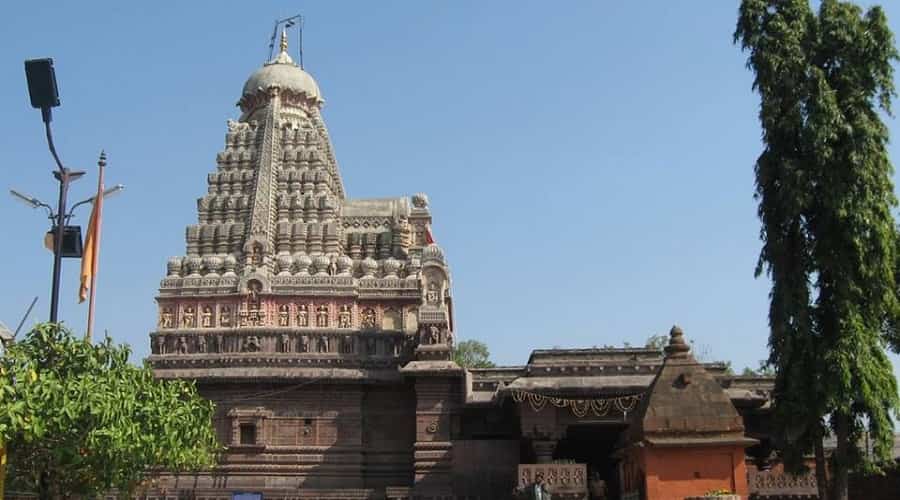
The famous temple of Lord Shiva’s Dhrishneshwar is situated near to Daulatabad in Aurangabad city of Maharashtra state. This holy place is also famous as ‘Grishneshwar ‘or ‘Ghrishneshwar’ which means ‘Lord of Compassion’. This Jyotirlinga is the last or 12th among the 12 Jyotirlingas of Lord Shiva which is mentioned in the Shiva Puranas. Devotees from far-flung areas come to visit here and attain inner peace. This pilgrimage site is located in Ellora and a few kilometers away from Ellora Caves.
The famous Ellora Caves which was established by the Buddhist Monks is near to this temple. The shrine/Tomb of Shri Eknathji Guru and Shri Janardan Maharaj is also present here. This holy temple is built with red rocks. The Dhrishneshwar Temple is built as an illustration of temples of the South in terms of infrastructure and style. The Ghrishneshwar Jyotirlinga of Lord Shiva falls in the Verul village nearly 20kms away from Daulatabad in the vicinity of Aurangabad.
The temple of Ghrishneshwar comes with a unique 5-tiered spire and is made out of red rocks. The temple interior is decked up with highly ornate carvings depicting images of various gods and goddesses. According to popular tales, a lord Shiva devotee had built this auspicious temple with the help of the treasure he had come across within an eerie snake pit. However, as per historical records Ahilyabai Holkar; the famed Maratha queen had been the founder of this temple.
FAQs
Q1: What is the significance of Jyotirlingas?
A1: Jyotirlingas are considered the radiant manifestations of Lord Shiva, and visiting them is believed to bestow spiritual enlightenment and blessings.
Q2: Can anyone visit the 12 Jyotirlingas?
A2: Yes, people of all faiths are welcome to visit the Jyotirlingas and experience their divine energy.
Q3: Are there any specific rituals to be followed while visiting these temples?
A3: While there are no strict rituals, it is customary to perform a simple puja and offer prayers to Lord Shiva.
Q4: What is the best time to visit the Jyotirlingas?
A4: The best time to visit these temples is during the Maha Shivaratri festival, which is celebrated with great fervor.
Q5: Can I visit all 12 Jyotirlingas in one journey?
A5: It is possible to visit all 12 Jyotirlingas in one pilgrimage journey, but it requires careful planning and a significant amount of time.
